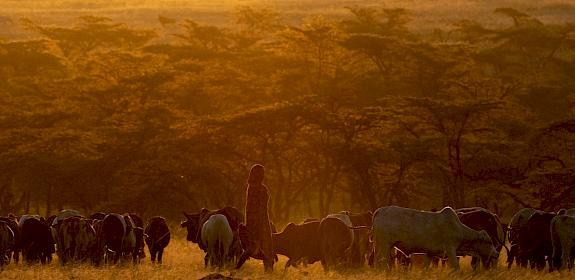Climate change threatens human livelihoods and wildlife resources
Cambridge, UK, 14th June 2013—Wild plants and animals important to people’s livelihoods in East Africa’s Albertine Rift region are at risk from climate change, finds a new joint TRAFFIC/IUCN study.
 Vital but vulnerable: climate change vulnerability and human use of wildlife in Africa’s Albertine Rift includes a comprehensive assessment of 2,358 wild animal and plant species and finds that 33 plant, 25 reptile, 24 mammal, 19 freshwater fish, 17 bird and 14 amphibian species are both important for use by people and vulnerable to climate change.
Vital but vulnerable: climate change vulnerability and human use of wildlife in Africa’s Albertine Rift includes a comprehensive assessment of 2,358 wild animal and plant species and finds that 33 plant, 25 reptile, 24 mammal, 19 freshwater fish, 17 bird and 14 amphibian species are both important for use by people and vulnerable to climate change.
Many people in the Albertine Rift region rely directly on wild species for their livelihoods, with many more deriving income through the processing and trading of wild products.
Uses of wild species ranges from fuelwood, food, medicine to ecotourism, sport hunting and construction materials, while exports, particularly of fish, also contribute significantly to the Gross Domestic Product (GDP) of several countries within the Albertine Rift.
“The biodiversity of the Albertine Rift supports millions of people by providing subsistence goods and livelihoods. Knowing how these important species are likely to be impacted by climate change is essential for developing effective climate change adaptation strategies for both people and biodiversity. We hope to be able to roll this approach out in other regions,” said Thomasina Oldfield, TRAFFIC’s Programme Leader on Research and Analysis and an author of the study said.
The study used a pioneering method1 developed by IUCN to assess the vulnerability of species to climate change by examining the unique biological and ecological characteristics that make species more or less sensitive or adaptable to climate change.
The study was funded by the John D. and Catherine T. MacArthur Foundation with contributions from the Indianapolis Zoo.
1) Details of the new method can be found in Identifying the World's Most Climate Change Vulnerable Species: A Trait-Based Assessment of all Birds, Amphibians and Corals.




